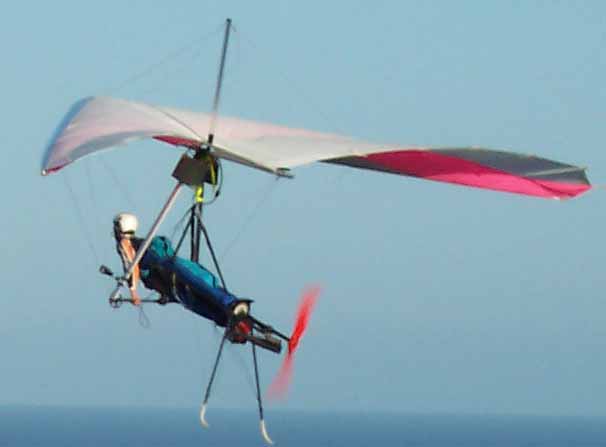
Due to the lightweight construction of a paraglider they make the perfect product to take to take on a hike or carry in a backpack. It is either on loan or in storage.Paragliders are a man powered inflatable wing that allows you the ability to fly in the sky feeling a sense of freedom like nonother. This object is not on display at the National Air and Space Museum. Gift of Lawrence “Pete” Lehmann Display Status

Speed, maximum rough air maneuvering: 74 km/h (46 mph) Speed range, light to moderate thermals: 29-45 km/h (18-28 mph) He reacquired the record-setting Talon 150 in 2005 and generously donated it to the Smithsonian National Air and Space Museum in 2006. Lehmann flew the Talon a total of about 140 hours and covered 3,381 km (2,100 miles) before selling it to Virginia pilot, John Harper, toward the end of 2002. His maximum altitude during the flight was 2,736 m (9,000 feet) and highest ground speed 156 km/h (97 mph).įlying this Talon 150, Lehmann also won the open class at the 2002 Region Nine Regional Contest, while other pilots flying Talons placed 3rd and 11th out of a field of 24 pilots. Nine hours after taking off, he landed at Reagan County Airport at 7:00 pm. Lehmann finally felt confident he would reach Big Lake with 72.5 kilometers (45 miles) to go. Lehmann took off from Zapata County Airport at 10:20 am but rather than setting a course directly downwind toward Big Lake, Lehmann had to first fly a curving course to the east to clear the civilian Class D airspace at Laredo, Texas. This goal flight, which he had to declare before taking off, exceeded the previous record goal flight by 16.1 km (10 miles). On 20 June 2002, Lehmann set a world record for the longest hang glider flight to a declared goal when he flew this Wills Wing Talon 150 a distance of 516.2 km (321 miles) from Zapata, Texas, to Big Lake, Texas. He competed in the 1998 World Hang Gliding Championships, and then became interested in setting records. His passion for the sport led him to serve on the board of directors of the U. He learned hang gliding while living in Germany and continued to fly after he relocated to the U. When he was 24, Lehmann saw his first hang glider while watching the IMAX film To Fly! at the National Air and Space Museum in 1977. Lehmann did become fascinated with airplanes but his less-than-perfect eyesight prevented him from flying military or commercial aircraft. Lehmann’s grandfather held a seat on the board of directors of Swissair Airlines and he encouraged his grandson to become interested in aviation at an early age. The pilot who donated his Talon 150 to the NASM, Lawrence “Pete” Lehmann, was born in New York City to Swiss immigrants in 1952. The Talon sold well and in December 2002, Wills Wing completed the company’s 20,001st hang glider, which happened to be a Wills Wing Talon 150.
Personal hang glider upgrade#
Slipstream control bar upgrade with faired aluminum basetube - $275.00 Slipstream control bar with carbon basetube (adds 1.2 lb to glider weight) - $325.00 According to the January 2003 issue of “Hang Gliding” magazine, suggested retail base price was $5,675, or $6,300 with all of the following options:Ĭustom sail patterns - contact manufacture for quoteĬarbon leading edge insert - $84.38 (two required) Several standard features made the Talon attractive to the pilots who wanted to compete at the sport’s highest levels: composite carbon-fiber crossbar keel, leading edge, and battens made of 7075-T6 aluminum a variable-geometry system that permitted the pilot to adjust the wing sail tension and sweep angle while flying, and a PX Laminate Mylar leading edge covering. This model weighs 35 kg (77 lb) without instruments or auxiliary equipment and the wing area is 14.2 m² (153 ft²).

The Talon 160 accommodated pilots with hook-in weights ranging from 81 - 126 kg (180 - 280 lb), the Talon 140 accommodated 61 - 101 kg (135 - 225 lb) pilots, and 79 - 124 kg (175 - 275 lb) pilots flew the Talon 150. The hang glider was made available to customers in three sizes. Eleven years later, Pearson began to design the Talon and after a development period lasting about 18 months, the hang glider was ready for production. In 1990, Steve Pearson of Wills Wing designed one of the most popular competition gliders of the era, the Wills Wing HP AT. He reached a maximum altitude of 2,736 m (9,000 ft) above sea level. Lehmann's 9-hour goal flight, which he had to declare before taking off, exceeded the previous record by 16.1 km (10 miles). On 20 June 2002, Lawrence "Pete" Lehmann set a world record for the longest hang glider flight to a declared goal when he flew this Wills Wing Talon 150 a distance of 516.2 km (321 miles) from Zapata, Texas, to Big Lake, Texas.


 0 kommentar(er)
0 kommentar(er)
